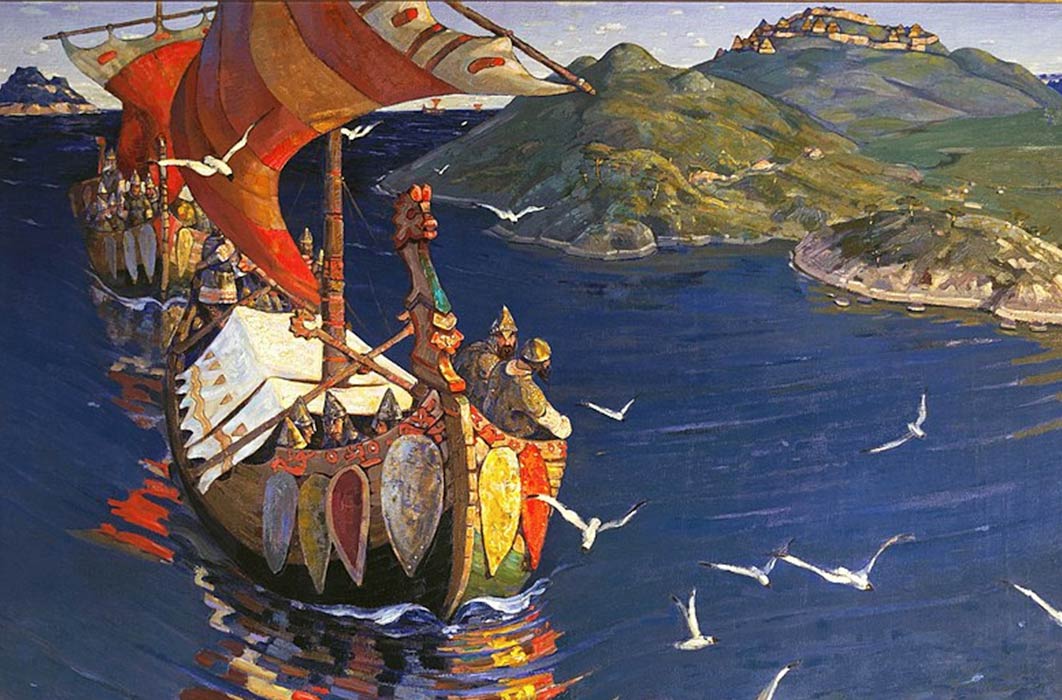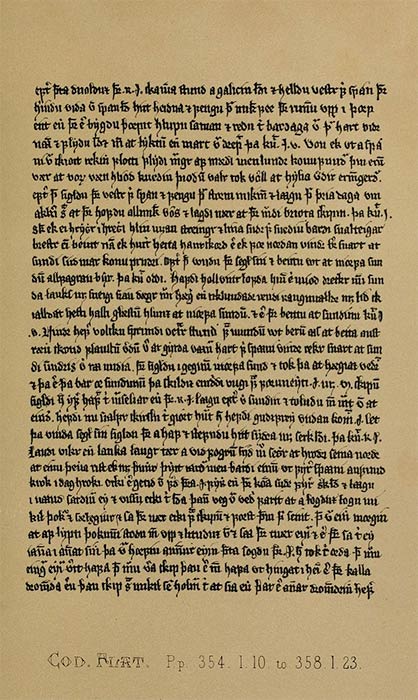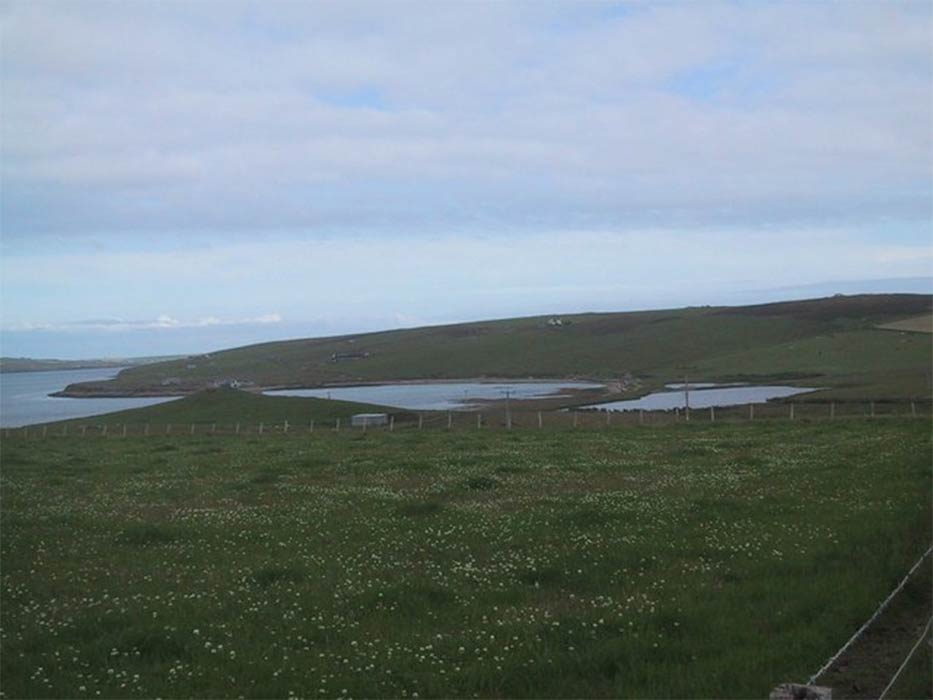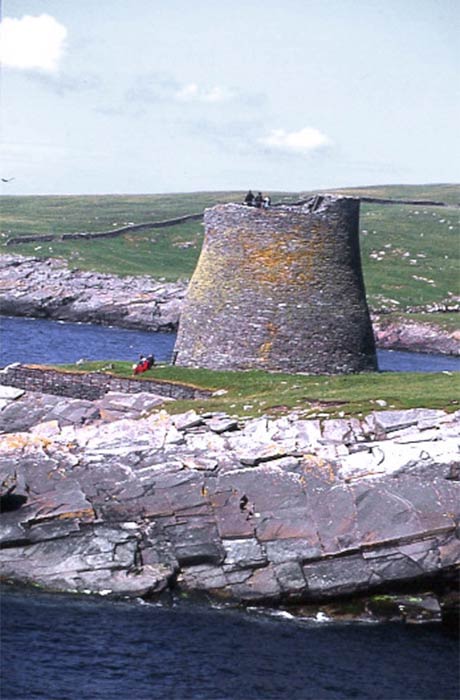
Dead Viking Dynasty Invade Scottish Neolithic Tombs
The Viking Age represents the earliest recorded raids made by Norsemen in 793 AD until the Norman conquest of England in 1066 AD. During this blood-thirsty period Scandinavians mastered shipbuilding and set out in waves to conquer Europe, and as their oceanic prowess increased they eventually reached North America. Television shows like History Channel’s Vikings, and Netflix’s Norsemen have made modern day heroes of Vikings like King Ragnar Lodbrok and his brother Rollo, who became the first ruler of Normandy in northern France. However, the Viking Age was filled with lesser known heroes aplenty, who never, and never will, make the silver screen, and among these ancient Norse warlords was Thorfinn Skullsplitter, and his five sons.

An example of a page from the Orkneyinga saga, as it appears in the 14th century Flateyjarbók. (Public Domain)
Viking Thorfinn’s Neolithic Burial
According to the 13th-century Orkneyinga Saga: The History of the Earls of Orkney, Thorfinn Torf-Einarsson was the youngest son of Torf-Einarr, son of Rognvald Eysteinsson, who was the first Earl of Orkney, and Grelad, a daughter of Earl Dungad of Caithness and Groa, the daughter of Thorstein the Red. Thorfinn had two brothers, Arnkel and Erlend, who died during a war expedition in England along with Erik Bloodaxe, whose widow, Gunnhildr, fled northwards to Orkney, north of mainland Scotland, where she and her sons used the archipelago as a base for summer raiding expeditions.
Thorfinn had five sons; Arnfinn, Havard, Hlodvir, Ljot, and Skuli and according to History of the Earls of Orkney, by Norse writer Snorri Sturlason: “Thorfinn lived to be an old man and may have died c. 963 AD on a bed of sickness.” Thorfinn’s sons are said to have become Earls after him, but Snorri noted that the Earldom was then beset by dynastic strife. It is among these tensions that this story finds its seed, beginning with a historical tradition in Orkney that maintains Thorfinn Turf-Einarsson was buried in the foundations of an ancient broch located at Howe of Hoxa, on South Ronaldsay, about two kilometers (quarter mile) west of St Margaret's Hope at the end of the B9043 road.

Thorfinn Turf-Einarsson, (Thorfinn Skullsplitter) the 10th century Norse Earl of Orkney, is thought to have been buried at the site of The Howe broch just north of Hoxa. (Sarah Charlesworth/ CC BY-SA 2.)
Measuring about 40 meters (131 feet) in diameter, by 4.5 meters (14.8 feet) high, archaeologists have discovered many Viking artifacts at the Hillock of Howe burial mound which is almost entirely turf-covered and partly composed of burnt material. As far back as 1940, according to Canmore, partial excavations produced “a considerable number of Viking relics including a Norse glass linen-smoother,” which has since been lost. Further excavations in 1978 at Hillock of Howe revealed an Iron Age ring-fort had been overlain by a broch, and that a Pictish settlement was later built on the south side of the broch, below which evidence was gathered of a much earlier structure, and a curious rectangular structure on top of the mound was suspected of belonging to the Viking Age.
- Things: Old Viking Parliaments, Courts And Community Assemblies
- Viking Blots, Beserkers and Barbaric Blood Eagles
- Orcadian Genesis: The Origins of the Orkney Isles’ Unique Megalithic Culture and its Roots in Britain’s Own Lost Atlantis – Part One
A fibula, gilded bronze needle, pottery, and skeletal remains were all excavated in 1979-80 and in 1981 further excavations determined that the much older structure was a Neolithic chambered tomb with three side cells, that was entered by a seven meter (23 feet) long passage with steps down to the central chamber. It was directly upon this 5,000 -year old death-chamber that the broch had been built in two phases, and upon that, the mortal remains of Viking Thorfinn Skullsplitter were laid to rest. In 2002, Dr Euan W Mackie descried this site as a: “complex sequence of dry stone structures dating from Neolithic to Pictish times” and that it represented “one of the largest and most expensive excavations ever undertaken in Scotland,” revolutionizing archaeologists understanding of the north Atlantic Iron Age.





